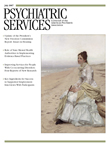Relational Processes and DSM-V : Neuroscience, Assessment, Prevention, and Treatment
Although empirical data and ideology both play necessary roles in diagnostic systems, neither should be used alone to determine the definition of diagnosis. DSM-IV-TR , like its previous edition, relies heavily on the ideology of the disease model, in which symptom sets determine diagnoses. Diagnoses are practical precursors of therapy. It may be suggested that our diagnoses recommend our therapies as much as our therapies, in reverse, recommend our diagnoses. This may be a tautology, but tautology may be inevitable in a system in which reliability and reproducibility are more easily achieved than validity. It is, for example, safer to state that one inch equals 2.54 centimeters than it is to argue that one inch is an important measurement in the first place. The DSM , in turn, may be reliable in assigning symptoms and consequently in defining diagnoses, although the value of these diagnoses in the determination of disease processes is not obvious.
Emil Kraepelin suggested that the developmental course of disease is fundamental to diagnosis. In his attempt to distinctly describe behavioral phenomena as diseases, Kraepelin wrote that the clinical condition is "the expression of a single morbid process." Such a perspective does not negate the existence of multifactorial contributions to disease, but it does imply that disease results from an abnormal process. Just as processes may occur within neurons, within cerebral lobes, or between synapses, processes may occur within individuals, within families, or between people. The definition of a process is a matter of perspective. And the perspective of the DSM is a matter of debate.
Relational Processes and DSM-V was conceived as a group of papers to address the gap, acknowledged by the American Psychiatric Association, in the DSM's approach to relational disorders. The book is a diverse, empirically oriented collection of chapters, each of which explores the impact of human or animal relationships on behavior and on illness. The book's title itself is indicative of two different agendas: the editors have not put together a book that can simply be titled Relational Disorders , because the chapters do not fully define relational disorders, nor do they claim to do so. Rather, the discussions in this text elaborate numerous factors of "morbid process" within the context of relationships.
In addition, the title implies a discussion of the DSM itself with reference to relational processes; such a discussion is also not fully achieved in this book. For example, in the chapter "Refining the Categorical Landscape of the DSM "—rich in its discussion of basic science, with a clear presentation of data culled from animal research, especially rats—the rats nibble off more than they can chew. The chapter does not adequately address the issue of categorical versus dimensional diagnosis. The discussion of hormones, neurotransmitters, and neural morphology may indeed provide data for a discussion of detriments of a categorical diagnostic scheme but does not provide a basis for the authors' assertion that "the current categorical organization of DSM-IV-TR has effects on misdiagnosis, assessment, and treatment." On the whole, however, the text does contain a very large amount of useful empirical data relevant to a discussion on relational processes.
Certain chapters, such as "Neurobiology of the Social Brain," do go further than others by providing a conceptual construct with which to frame the data. The authors of that chapter delineate four components of social relationships: recognition, motivation, approach, and bonding. This seems the sort of successful translation from research to behavioral constructs that might then permit a second translation from behavioral constructs to nosologic constructs.
Other topics include childhood maltreatment, marriage, and expressed emotion—the latter in two separate chapters—which are each explored with regard to health and pathology. Among the 15 chapters are discussions of epidemiology, psychology, biology, and taxonomy. The data described in Relational Processes and DSM-V seem significant. It will be necessary to shape these data into conceptually coherent concepts in order to ensure their eventual inclusion into a new manual in which, one hopes, neither empiricism nor ideology alone consistently determine the definition of a diagnosis.



